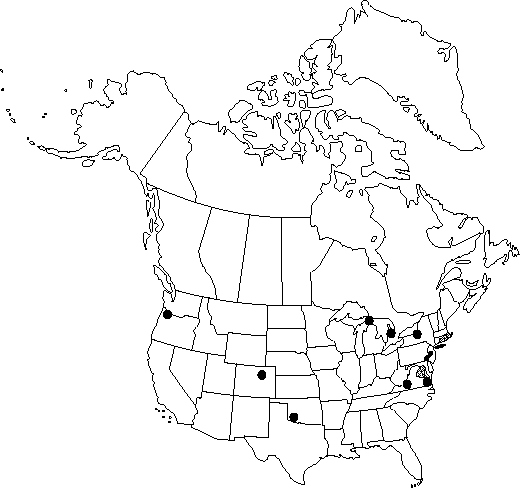Glaucium flavum
Stirp. Austr. Fasc. 2: 133. 1763.
Plants biennial or perennial, to 8 dm. Stems branching. Leaves to 30 cm; basal numerous, blade densely pubescent; basal and proximal cauline with blade lyrate, 7-9-lobed; distal with blade ovate, cordate, distinctly clasping stem; margins deeply dentate. Flowers: pedicels stout, to 4 cm; sepals 20-30 mm; petals yellow, sometimes orangish, sometimes with reddish to violet basal spot, obovate, 25-40 mm. Capsules sublinear, mostly distinctly curved, sometimes straight, to 30 cm, glabrous, tuberculate, or scabrous. 2n = 12.
Phenology: Flowering summer.
Habitat: Open sandy shores and flats, waste places, and on ballast
Elevation: 0-200 m
Distribution

Introduced; Ont., Colo., Conn., Md., Mass., Mich., N.J., N.Y., Okla., Oreg., Pa., R.I., Va., Europe, sw Asia.
Discussion
Native from the Black Sea and Transcaucasus to coastal southern and western Europe, and also well established as a ruderal in central Europe, Glaucium flavum has spread far beyond that range as a ballast waif and occasional garden escape. It should be expected elsewhere in the flora.
Selected References
None.
